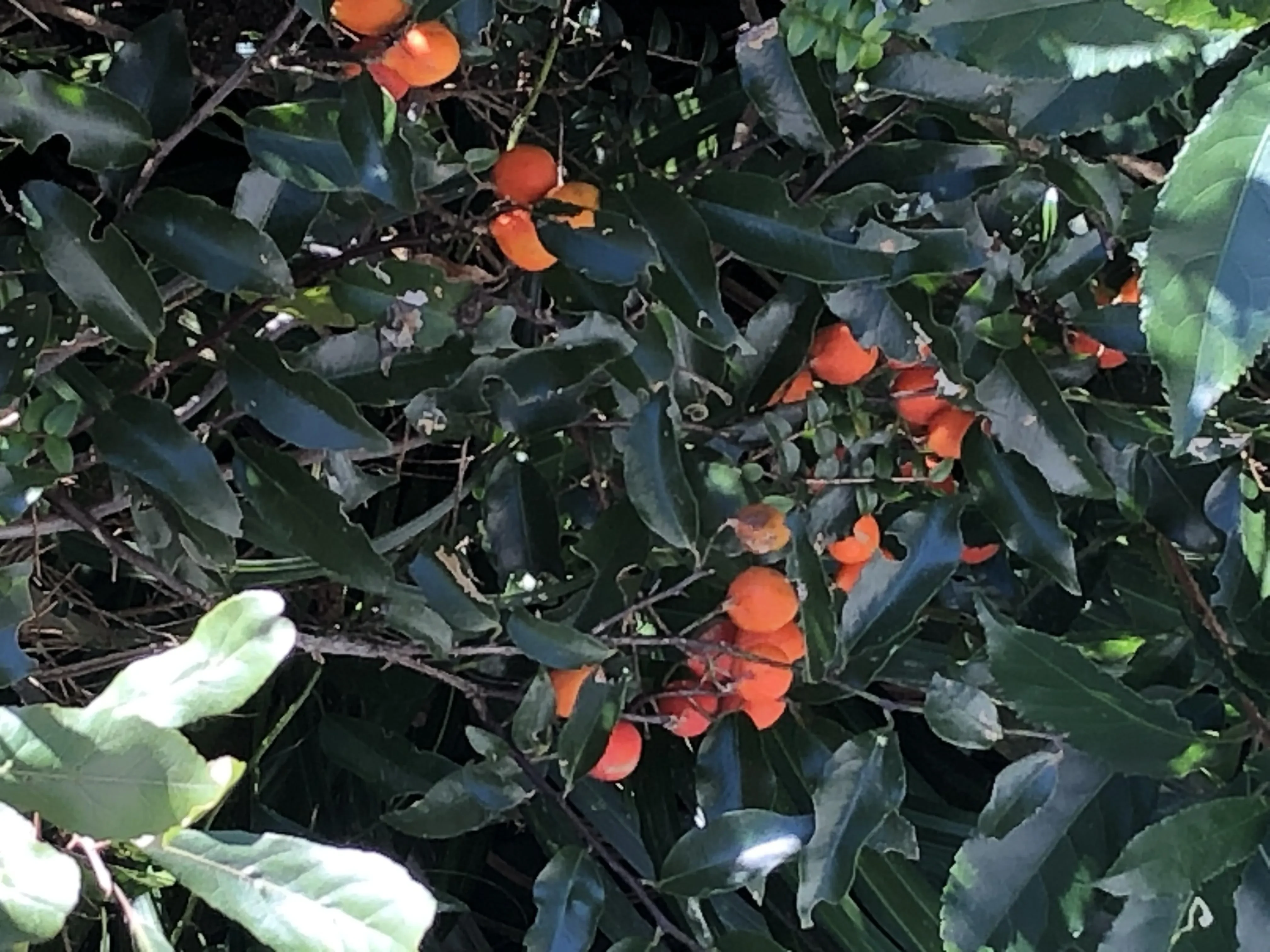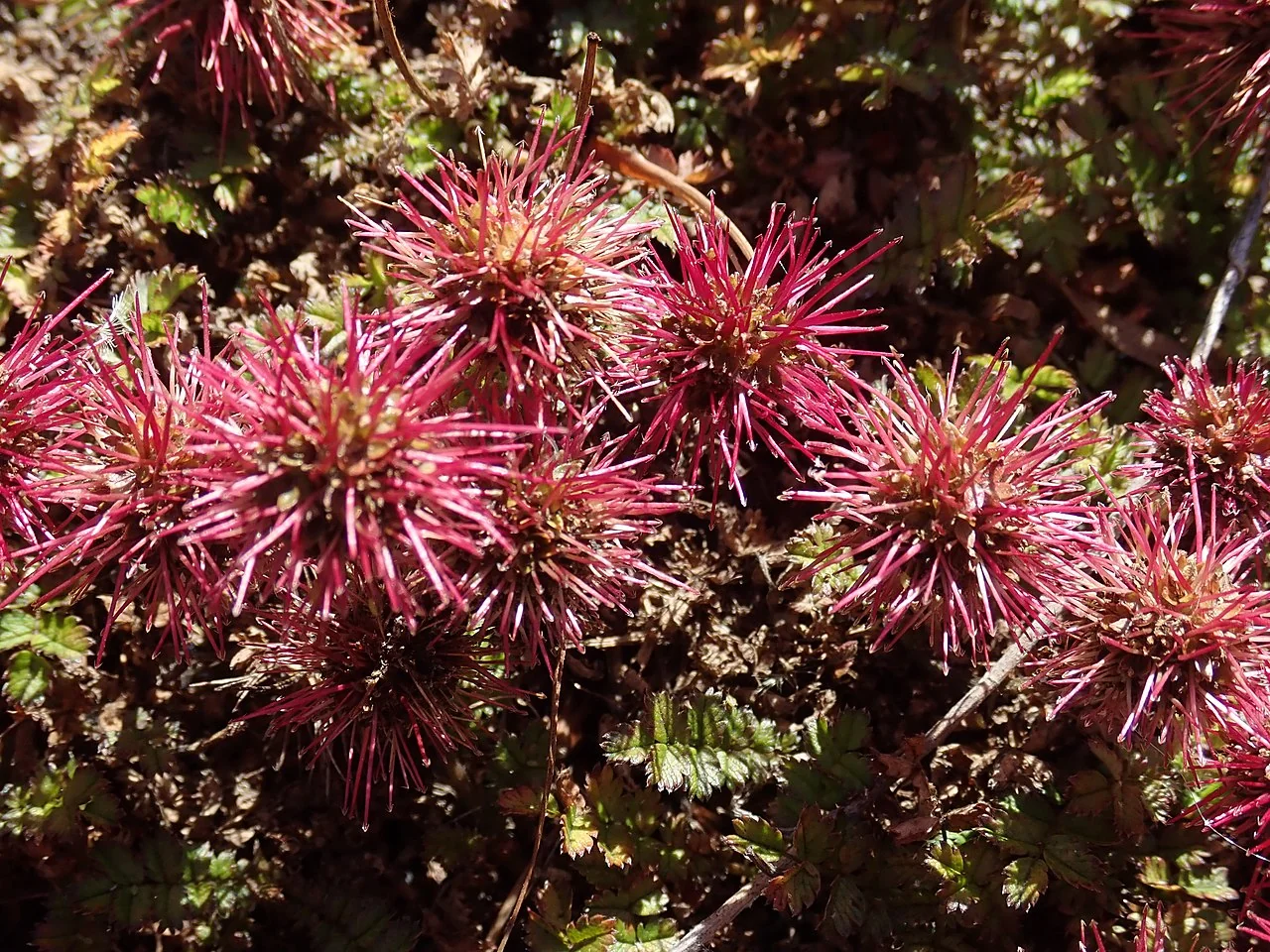
Kōhia
Passiflora tetrandra
Introduction
Introduction Overview
Passiflora tetrandra , known as Kōhia or New Zealand Passion Vine, is our only native passion flower species. This vigorous climber produces fragrant greenish-white flowers and distinctive orange fruits that split to reveal black seeds in bright red arils. An important food source for native birds, this forest vine can climb to the canopy of tall trees and was traditionally used by Māori for its strong, flexible stems. native trees .

Plant Description
Botanical Features
Kōhia ( Passiflora tetrandra ), also known as New Zealand passionflower, is the sole species of passionflower native to New Zealand. It is a vigorous, high-climbing, evergreen perennial vine that can grow up to 9-10 meters and supports itself with touch-sensitive tendrils. Its leaves are alternate, broadly lanceolate, glossy bright-green, shiny, and untoothed. It produces small (8-15 mm in diameter), white to yellow flowers, appearing in groups of 1-3 in the leaf axils between October and December. They are often honeysuckle-scented and change colour over a few days as they age. Individual plants are either male or female, meaning both male and female plants are required for fruit production. The fruit is a lemon-shaped, orange fruit up to 30 mm long, found from summer to autumn. The fruit is edible, and the gum from the stem was traditionally chewed by Māori. The seeds have a peppery taste.
Quick Facts
Quick Facts Overview
| Scientific Name | Passiflora Tetrandra |
|---|---|
| Height | Up to 10 meters (33 ft) as a climber |
| Spread | Spreads several meters; twining vine that can cover large trees |
| Water Needs | Moderate; prefers moist, well-drained soils |
| Light | Full sun to partial shade |
| Frost Tolerance | Low to moderate; young plants need protection from frost |
| Salt Tolerance | Moderate; tolerates some coastal exposure |
| Growth Rate | Fast; vigorous climber in suitable conditions |
| Lifespan | Perennial; long-lived in forest settings |
Climate Best Suited to
Passiflora is native to New Zealand and thrives in the country's diverse climate conditions. It adapts well to various regional climates throughout the country.
Regional Suitability
| City | Climate Suitability |
|---|---|
| Whangārei | Ideal |
| Auckland | Ideal |
| Hamilton | Ideal |
| Tauranga | Ideal |
| Rotorua | Ideal |
| Gisborne | Ideal |
| New Plymouth | Ideal |
| Napier | Ideal |
| Whanganui | Ideal |
| Palmerston North | Ideal |
| Wellington | Ideal |
| Nelson | Ideal |
| Christchurch | Ideal |
| Dunedin | Ideal |
| Invercargill | Ideal |
Natural Habitat
Natural Habitat Overview
Passiflora tetrandra is naturally found in specific habitats throughout New Zealand. Understanding its natural environment helps in providing appropriate growing conditions in cultivation.
Plant Conservation
Conservation
Passiflora tetrandra , also known as Kāhia, New Zealand passionflower, or New Zealand passionfruit, is an endemic climbing vine found in New Zealand.
According to the NZPCN, its conservation status has been assessed multiple times:
- In 2004, 2009, 2012, and 2017, it was classified as "Not Threatened."
- The most recent assessment in 2024, using the New Zealand Threat Classification System (NZTCS), also lists it as "Not Threatened."
Regionally, for Auckland, its status in 2025 is "Regionally Not Threatened." Despite its "Not Threatened" status, Passiflora tetrandra benefits from ongoing conservation efforts focused on habitat protection and restoration. These efforts include controlling invasive species, promoting native forest regeneration, and increasing public awareness about the ecological significance of this unique native vine. While not significantly impacted by browsing animals, the plant faces threats from introduced pests such as possums and rats, which consume its fruit. This predation can negatively affect forest health and the long-term viability of Passiflora tetrandra populations. The species is ecologically important as a food source for native birds.
Soil Requirements
Passiflora prefers well-draining soil with good organic content. It can adapt to various soil types but performs best in loamy or sandy soils.
Water Needs
Passiflora requires moderate watering, especially during establishment. Once established , it becomes more drought-tolerant.
Light Requirements
Passiflora grows best in full sun to partial shade, depending on the specific species and local climate conditions.
Temperature
Passiflora is well-adapted to New Zealand's temperate climate and can tolerate both warm summers and cool winters.
Planting Guide
When to Plant
The best time to plant Passiflora is during spring or autumn when soil temperatures are moderate and rainfall is reliable.
How to Plant
Dig a hole twice the width of the root ball and slightly deeper. Place Passiflora in the hole, backfill with soil, and water thoroughly. Mulch around the base to retain moisture.
Ecological Role
Role in Native Ecosystems
Kāhia provides food for native birds and insects, supporting local biodiversity. Its flowers attract pollinators, while the fruit is an important food source for birds such as kererū and tūī. The vine 's dense growth offers shelter and nesting sites, contributing to the health and resilience of New Zealand's forest ecosystems.
Uses and Applications
Practical Applications
Passiflora has various practical and ornamental uses. From traditional Māori applications to modern landscaping, this versatile plant serves multiple purposes.
Historically, Passiflora was used by Māori for medicinal purposes, food, and cultural practices. These traditional uses reflect the deep knowledge of native plants.
Landscaping Uses
Garden Design Ideas
Kāhia is ideal for covering fences, trellises, or growing up trees in native gardens. Its vigorous growth and attractive foliage make it a great choice for natural screens, wildlife gardens, and adding vertical interest to landscapes.
Seasonal Care
Spring
Spring is the ideal time to plant Passiflora as the soil warms and new growth begins. Water regularly to establish roots and apply a light mulch to retain moisture.
Summer
During summer , Passiflora may require additional watering during dry spells. Monitor for pests and provide shade if needed in hot climates.
Autumn
Autumn is perfect for transplanting Passiflora as the cooler temperatures reduce stress. Reduce watering as growth slows.
Winter
Winter care for Passiflora involves minimal maintenance. Protect from severe frosts if necessary and avoid overwatering.
- Plant in well-drained soil
- Apply light mulch
- Water regularly to establish roots
- Monitor for drought stress
- Provide shade in hot climates
- Check for pest infestations
- Transplant established plants
- Reduce watering as growth slows
- Collect seeds for propagation
- Protect from severe frosts
- Avoid overwatering
- Minimal maintenance required
Pruning
Pruning Techniques
- Prune after fruiting to control size and shape
- Remove dead or tangled stems as needed
Regular pruning maintains plant health and desired shape. Remove dead , damaged, or crossing branches to improve air circulation.
How to Grow Kōhia
Kōhia, also known as New Zealand Passion Vine, is our only native passion flower species. This vigorous climber produces fragrant greenish-white flowers and distinctive orange fruits that split to reveal black seeds in bright red arils. An important food source for native birds, this forest vine can climb to the canopy of tall trees and was traditionally used by Māori for its strong, flexible stems. Understanding its propagation methods is key to successfully growing this delightful species.
From Seed
Propagating Kōhia from fresh seed is a viable method, though germination can be slow and may require stratification. Collect ripe seeds in late autumn or early winter. Clean the seeds thoroughly to remove any fleshy pulp. Sow the seeds in a tray filled with a well-draining seed-raising mix, lightly covering them. The seeds typically require a period of cold stratification (e.g., refrigerate for 2-3 months) to break dormancy. Maintain consistent moisture in the seed tray and keep it in a warm, sheltered location. Germination can take several weeks to months after stratification. Once seedlings have developed a few true leaves, they can be potted into individual containers and grown in a sheltered environment before planting out.
From Cuttings
Semi-hardwood cuttings are a reliable and efficient method for propagating Kōhia, ensuring that new plants retain the exact characteristics of the parent. Take 10-15 cm cuttings from healthy, semi-hardwood stems in late summer or early autumn. Remove the lower leaves and dip the cut end in a rooting hormone. Insert the cuttings into a well-draining propagation mix (e.g., sand and perlite). Keep the cuttings in a warm, humid environment, out of direct sunlight, perhaps under a plastic dome or in a propagator. Rooting typically occurs within 8-12 weeks. Once rooted, the new plants can be potted on and grown in a sheltered environment until they are ready for planting.
Pests and Diseases
Common Pests
Passiflora is generally resistant to most pests due to its native adaptations. However, it may occasionally be affected by common garden pests such as aphids or scale insects.
Disease Prevention
To prevent diseases, ensure good air circulation around Passiflora and avoid overwatering. Remove any diseased plant material promptly to prevent spread.
Cultural Significance
Cultural Importance
Hinu Kāhia and Traditional Uses
Kāhia's seed oil (hinu kāhia) was prized as a base for scented body oils and soothing balms; ripe fruit were eaten and used for colouring. Strong, flexible vines served as lashings for construction and tools.
Passiflora tetrandra , known to the Māori as Kāhia, holds significant cultural importance in New Zealand, primarily through its diverse traditional uses. The Māori utilized Kāhia for medicinal purposes; the oil extracted from its seeds, called hinu kāhia, was a valuable salve for treating chronic sores, old wounds, chapped nipples, and swollen breasts. It was also combined with other plant materials, such as kohukohu, to create ointments for skin conditions like itching and eczema. Additionally, a decoction made from harakeke root and kāhia berry juice was consumed to alleviate flatulence. The berries were traditionally harvested and their pulp eaten, and they were used to flavor foods, including jellies made from seaweed. The fruit pulp served as a natural pigment for painting faces with a delicate red colour. Hinu kāhia was highly prized for producing fragrant body oils, which formed the base for various cosmetic and medicinal preparations. It was sometimes blended with gums from other plants like tarata and kōhūhū to enhance scent. A gum-like substance from the bark was also used to create pomades and add fragrance to oils. The strong and flexible stems of the vine were employed as lashings in the construction of houses and fences, and for securing tool handles, such as those of adzes. The dried trunk or stem could also be used as a slow-burning ember, allowing travelers to carry fire with them.
Bonus Tip
Expert Growing Advice
Kōhia is New Zealand's only native passionflower species. Its fruit was traditionally eaten by Māori, who also used the plant's stems for lashing in construction and even as a slow-burning ember for travelers.







